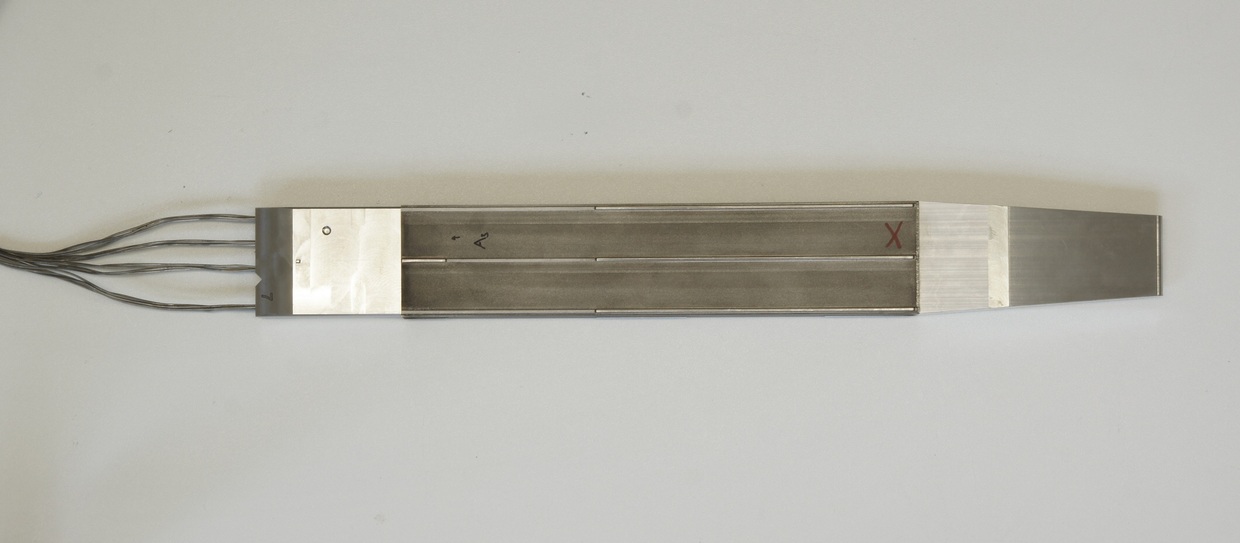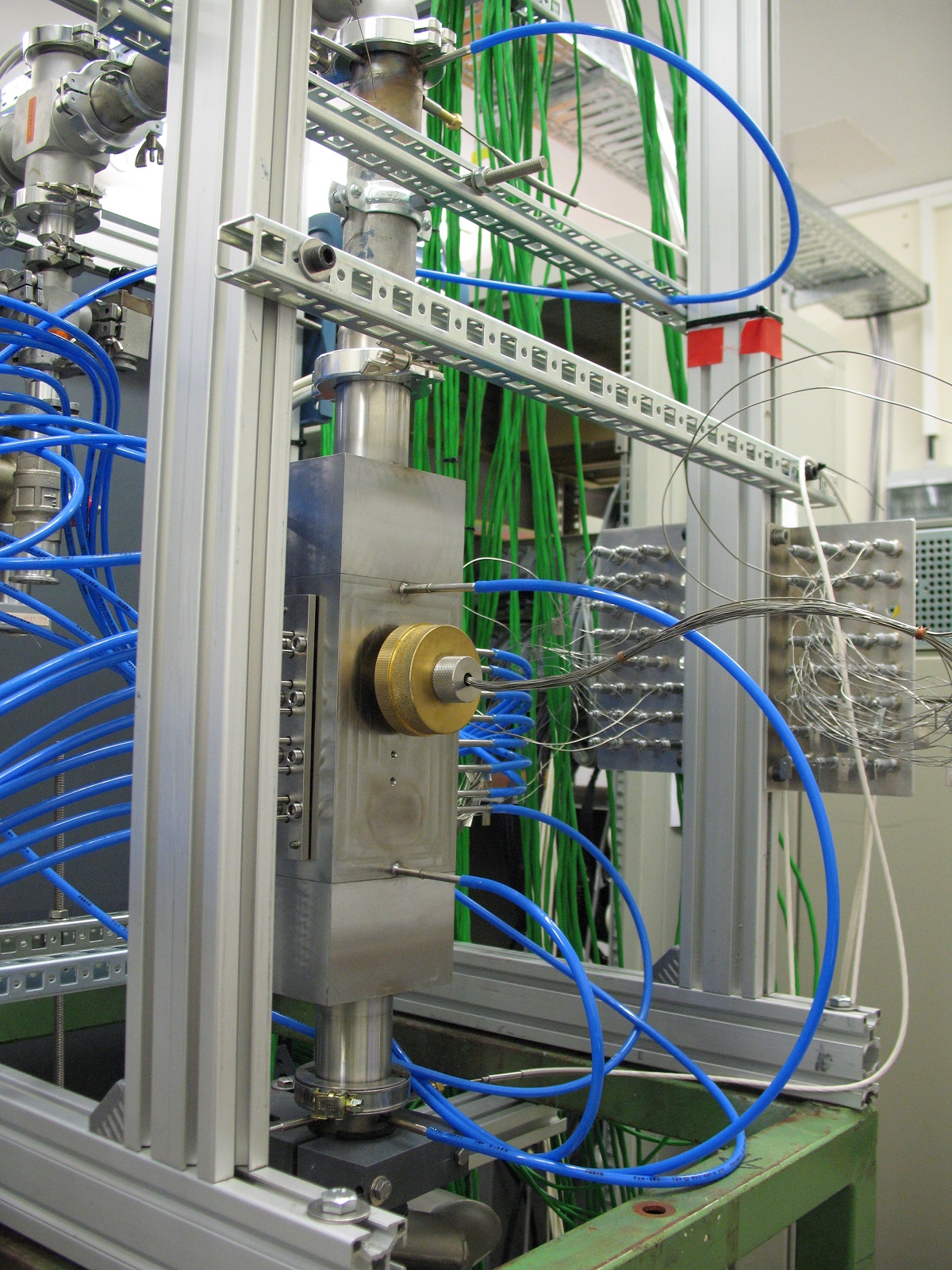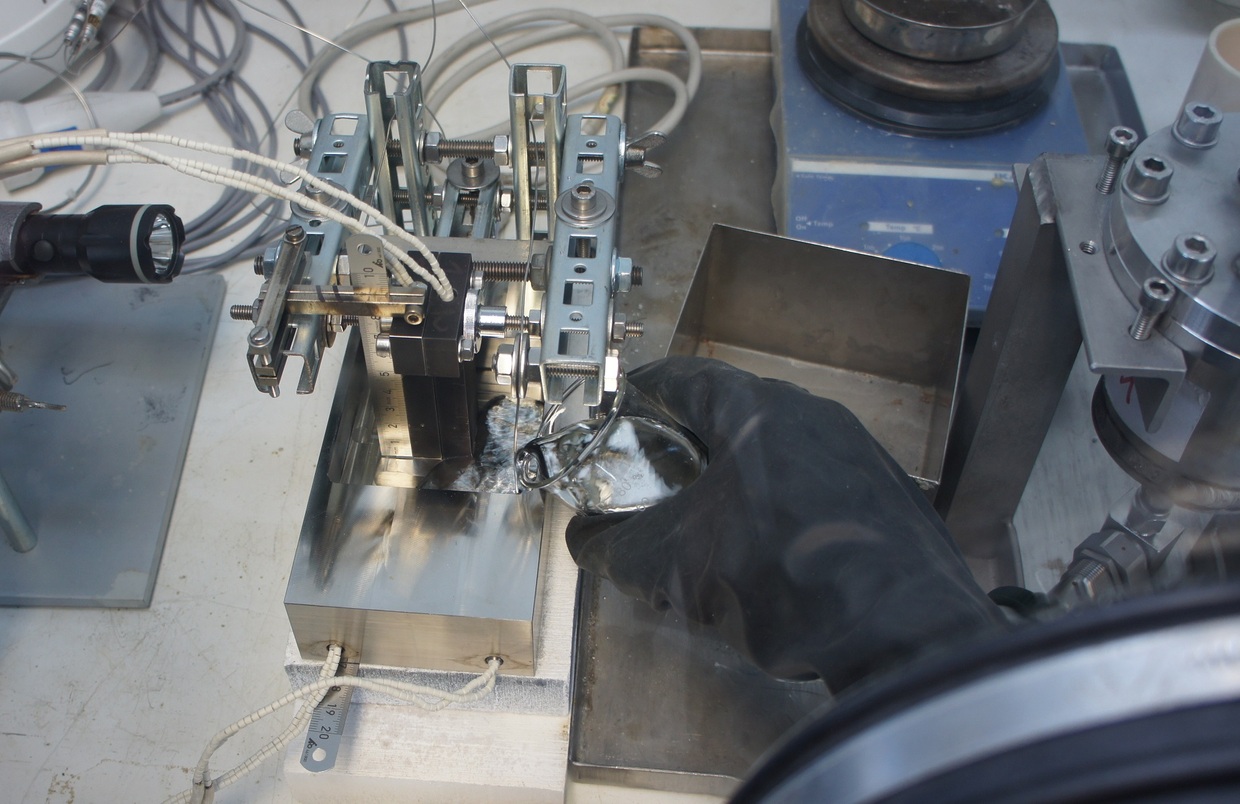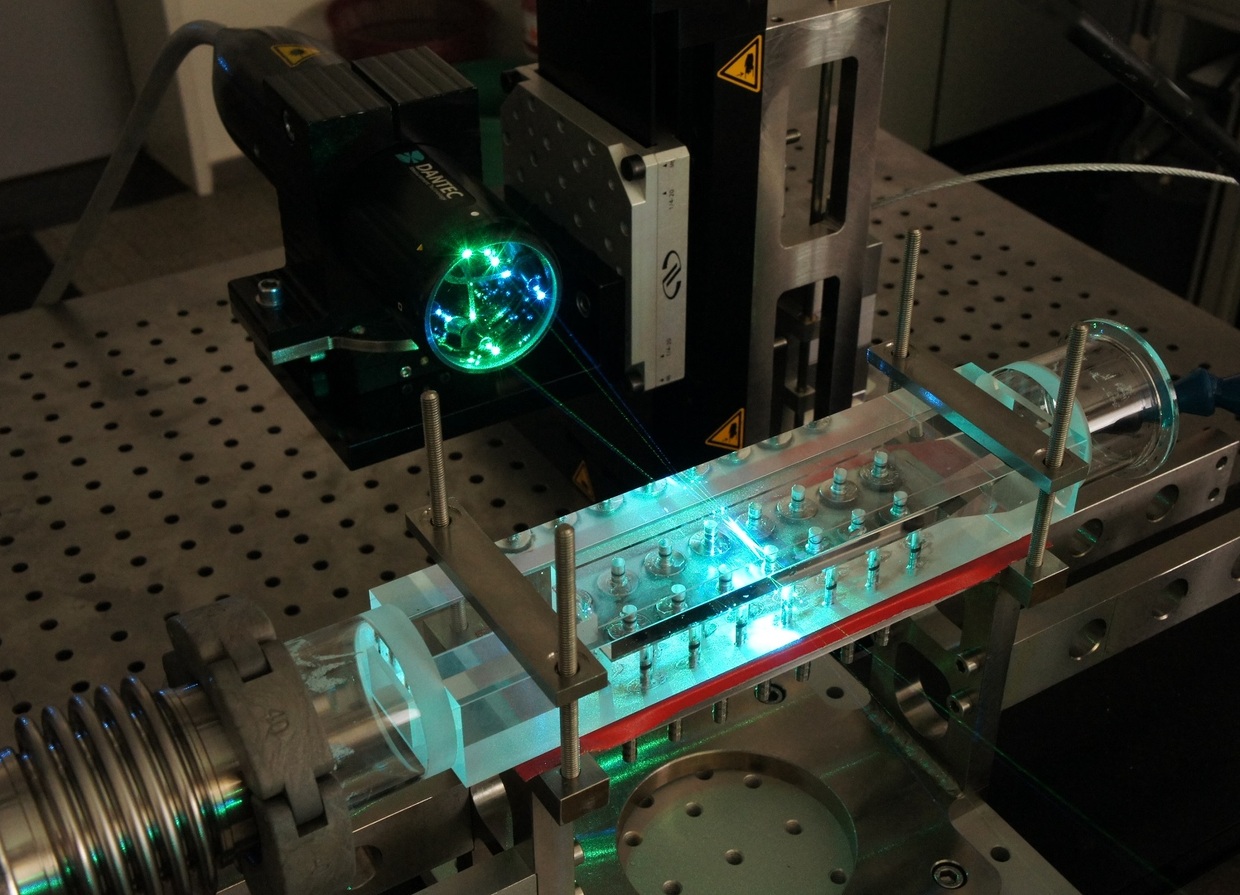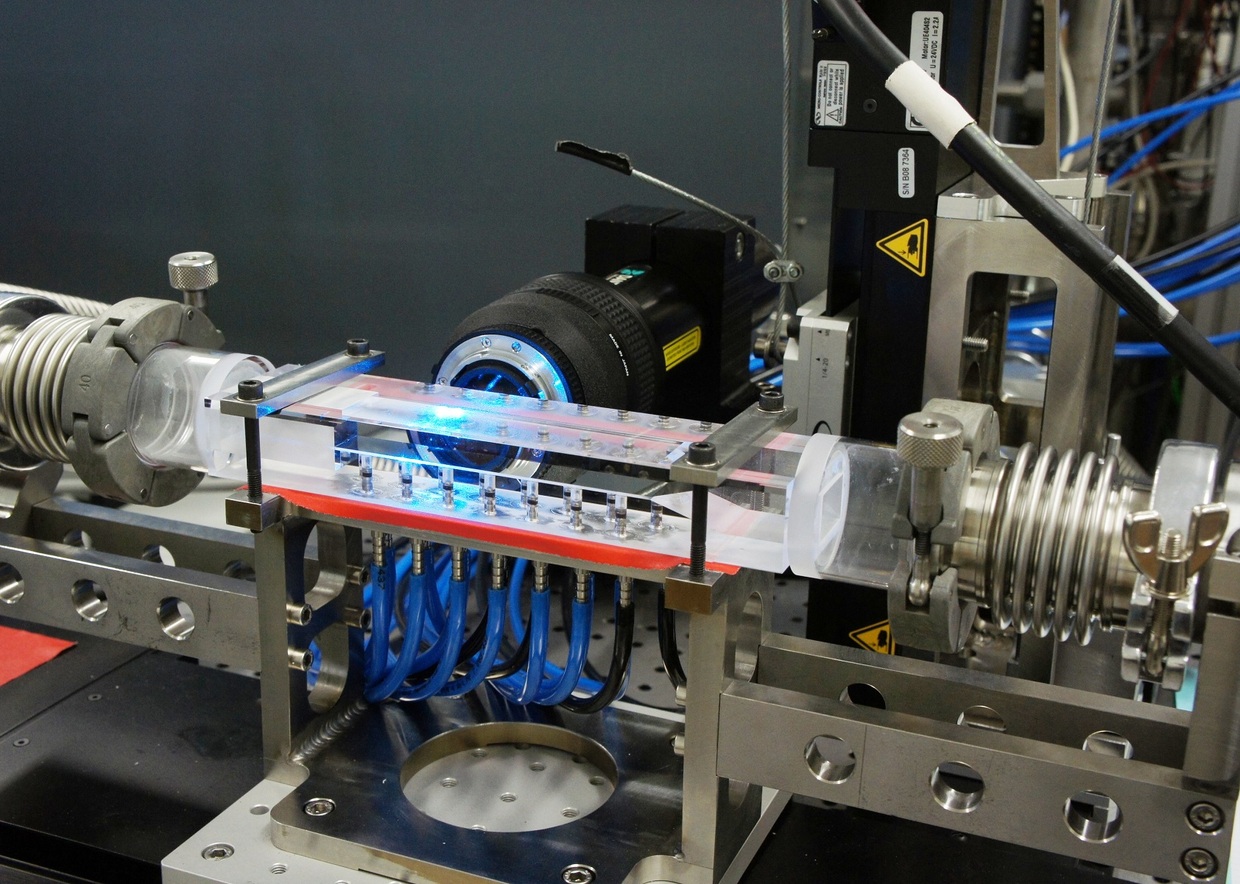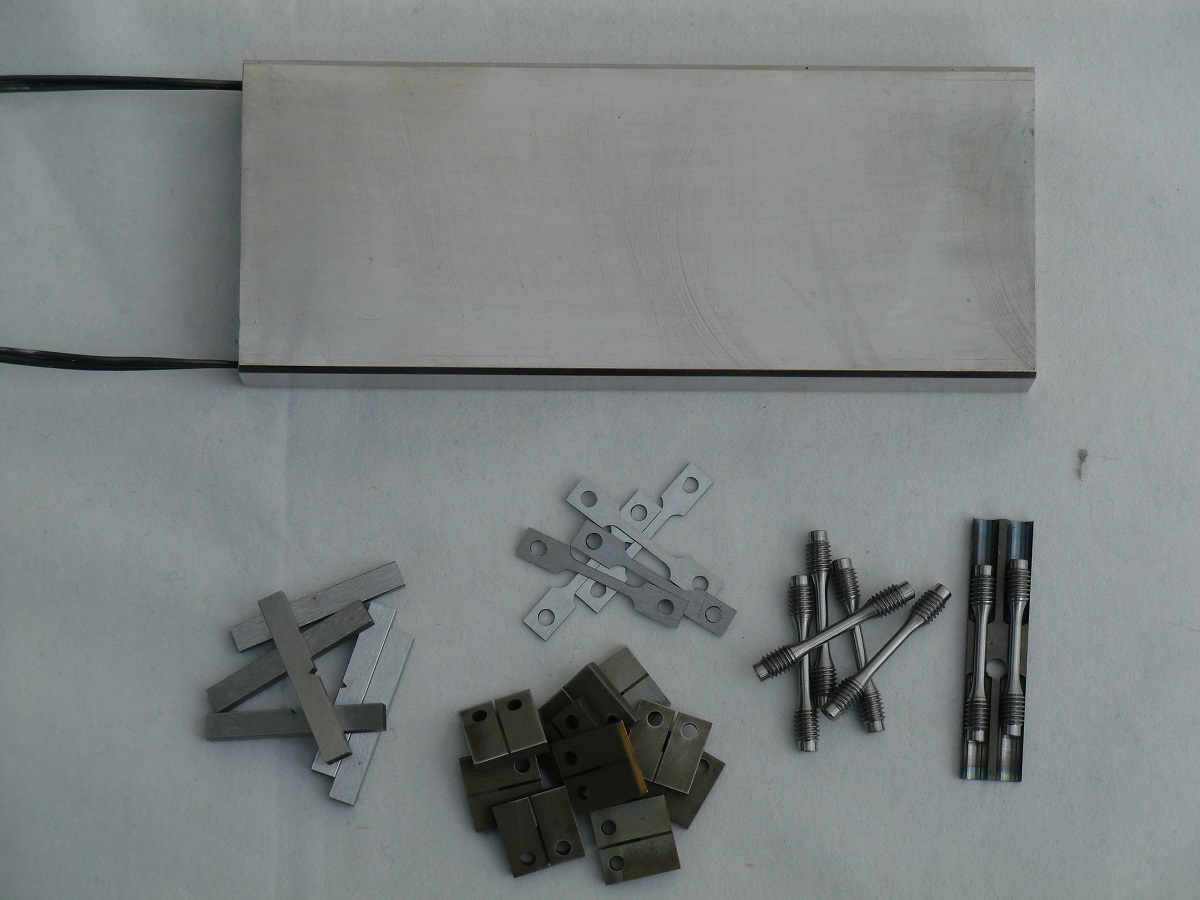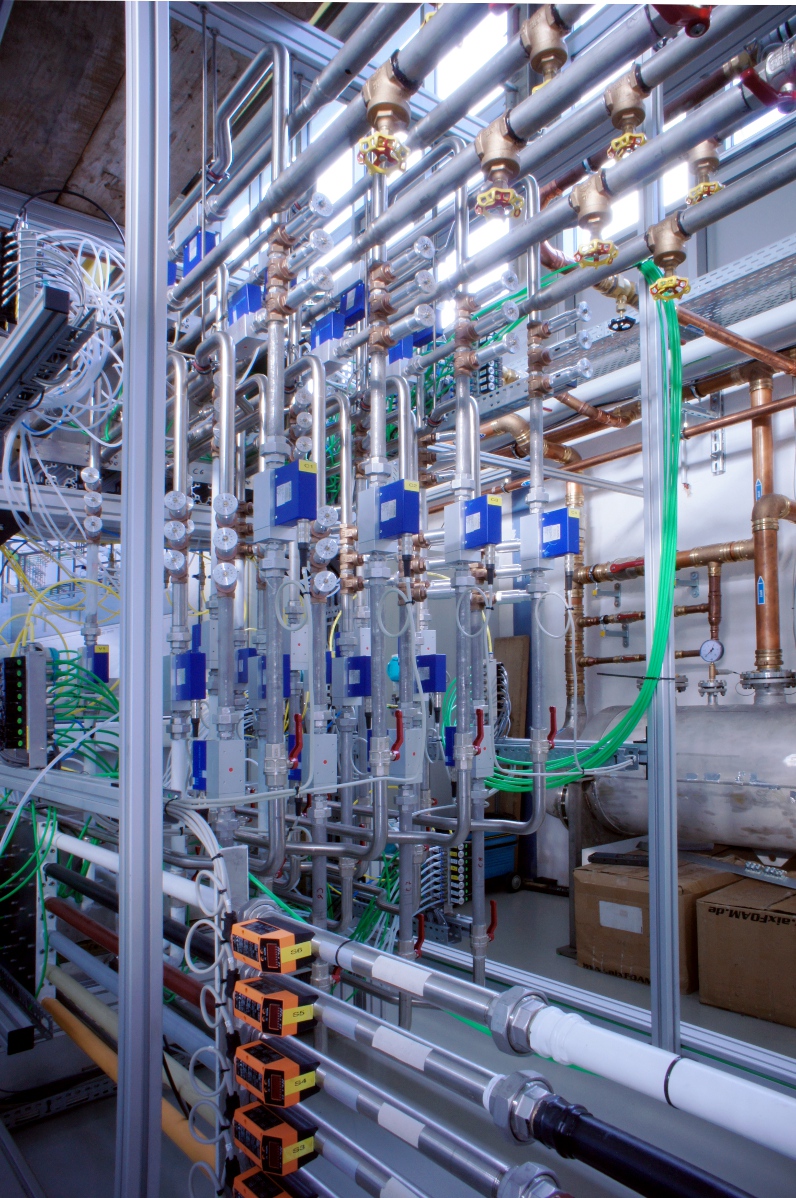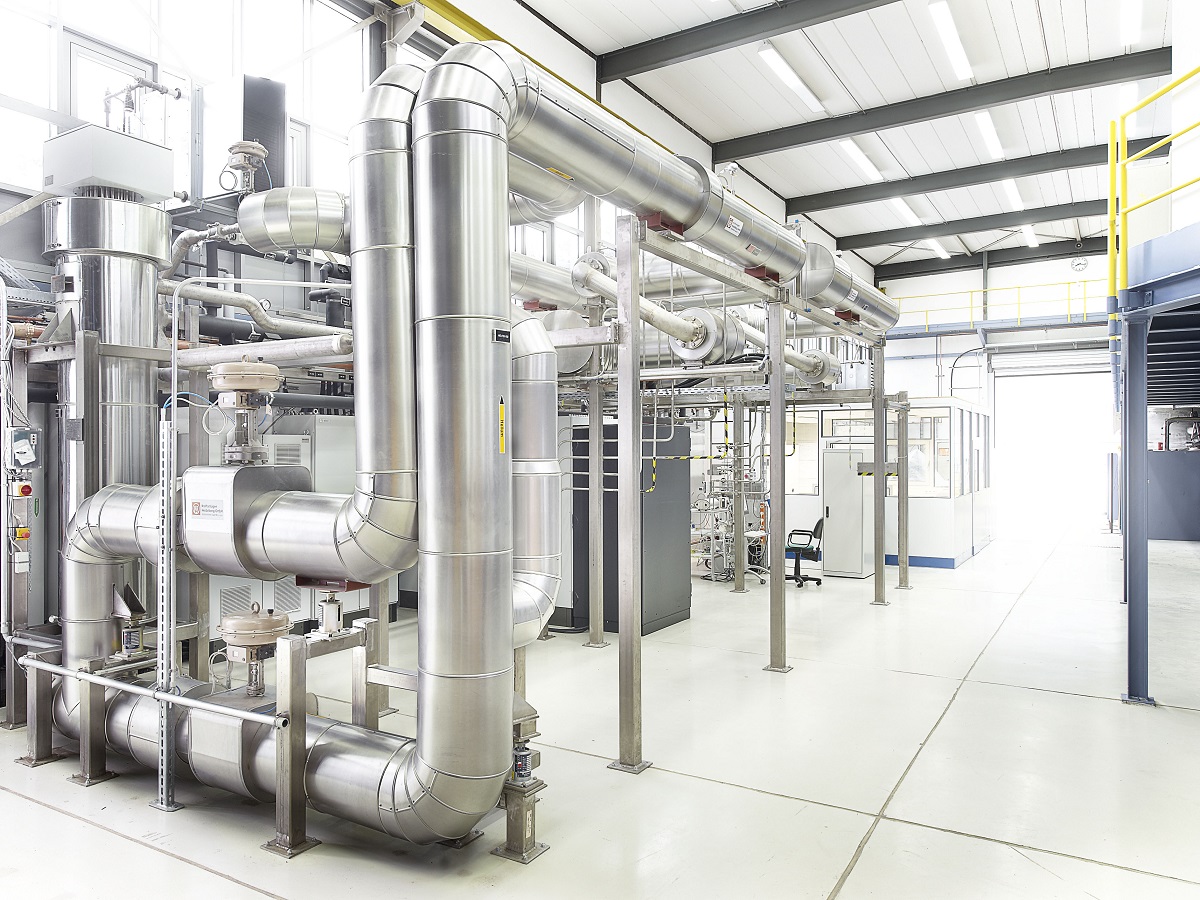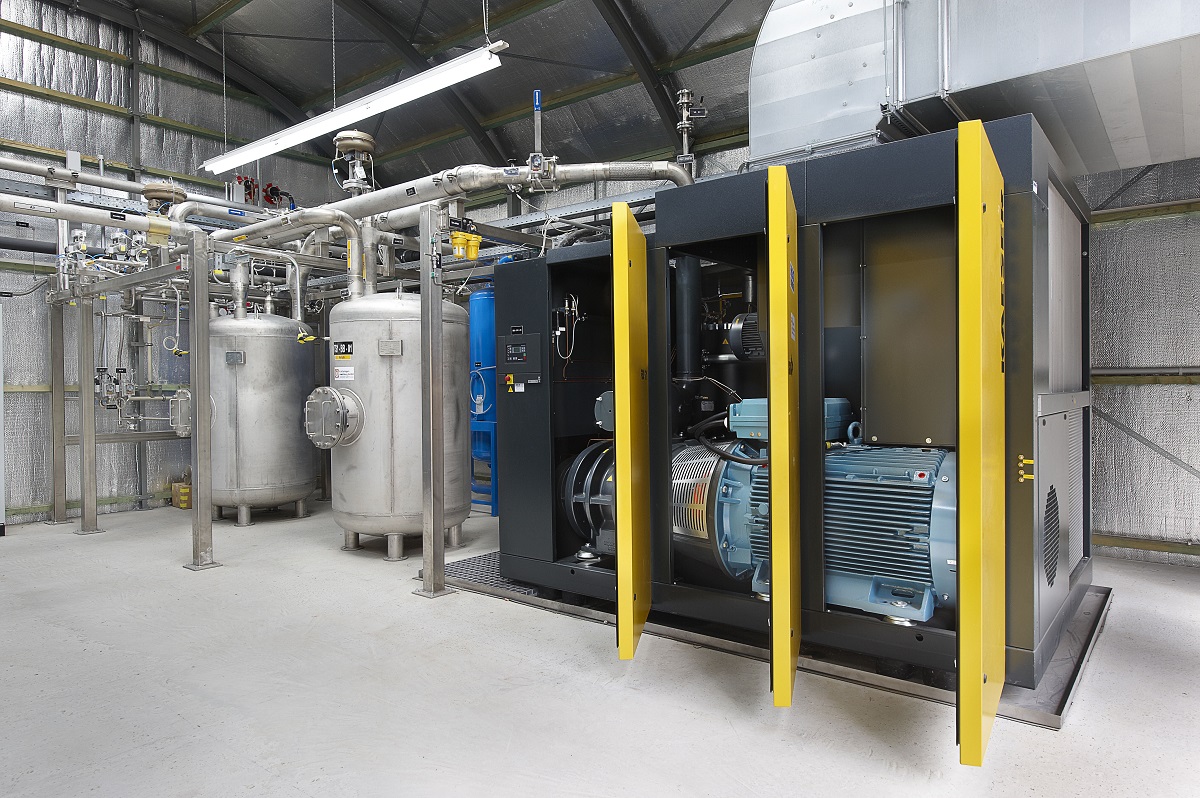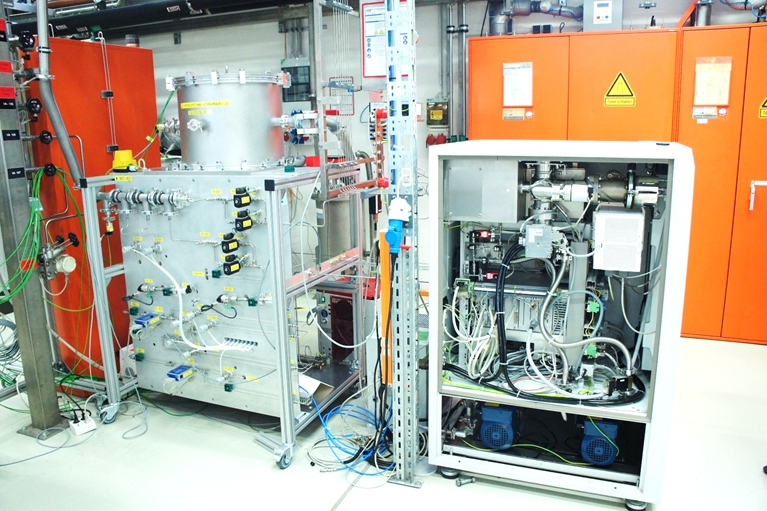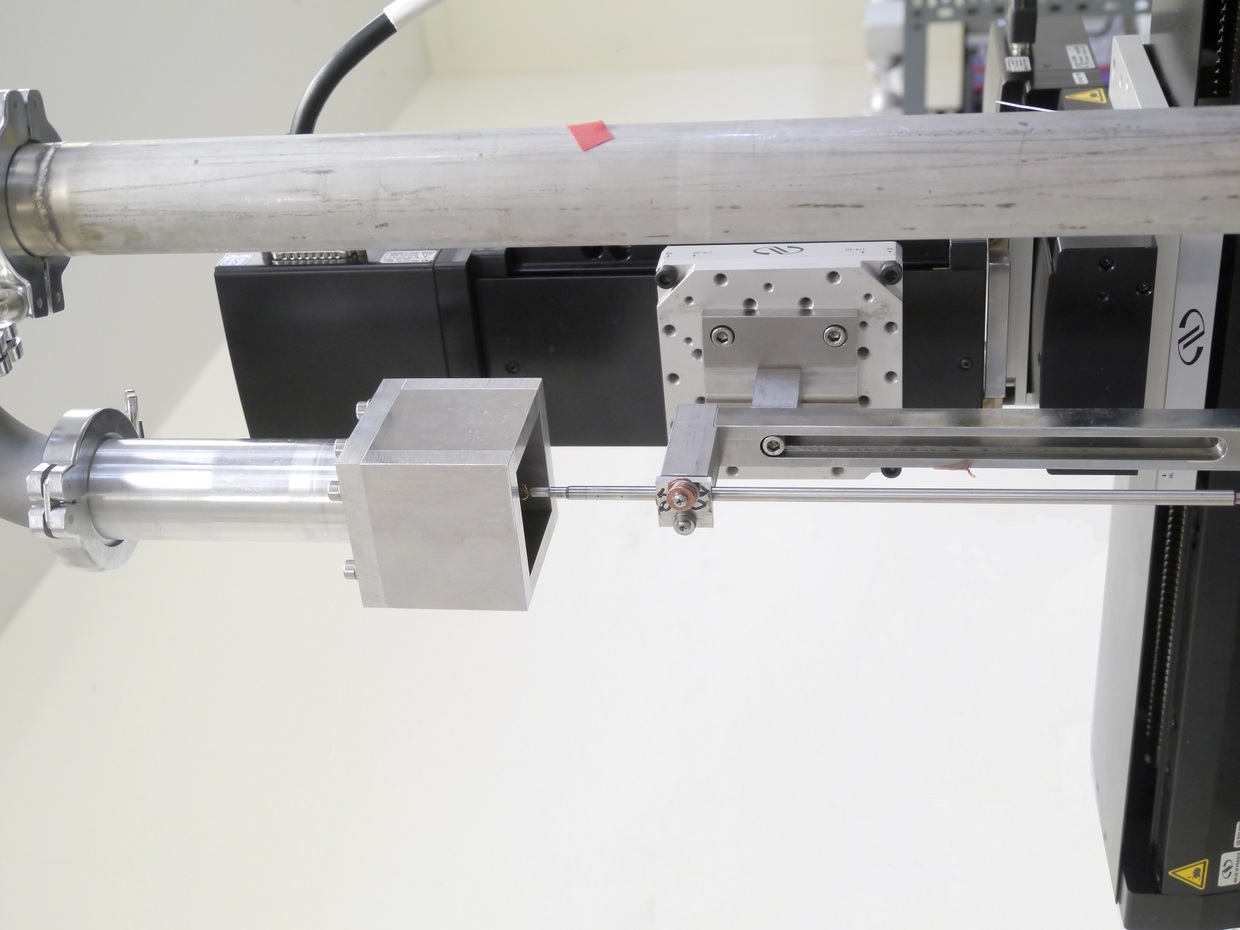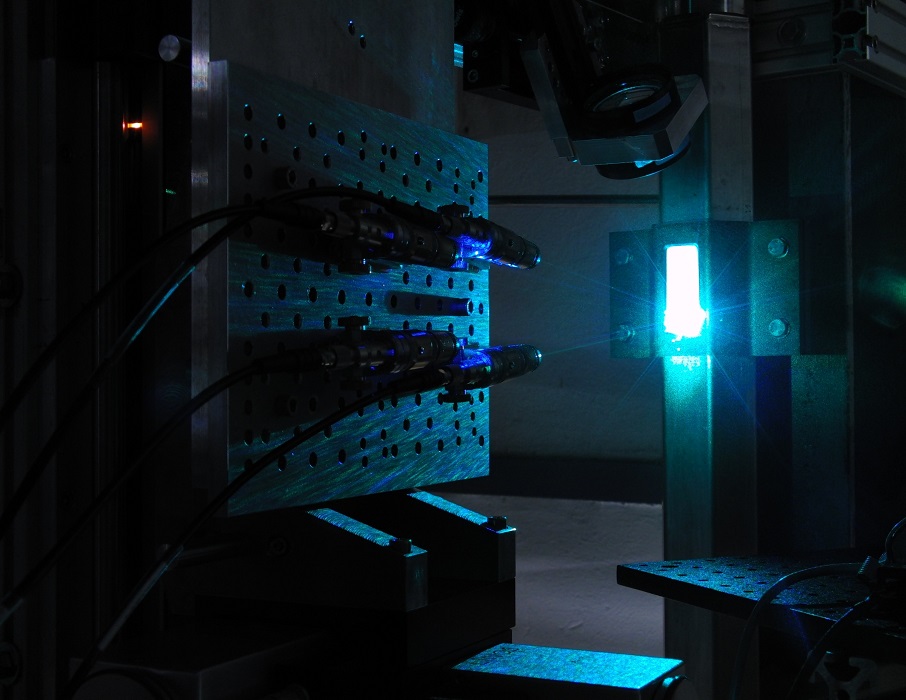Overview
The INR-MET group focuses on the targeted development of experiments and the associated measurement techniques and evaluation methods. Experiment planning includes the quantification and minimization of error sources and cross-influences. Experiments range from tabletop setups to complex irradiation modules.
The group's equipment includes various flow measurement techniques (laser Doppler anemometry, particle image velocimetry, laser-induced fluorescence, hot-wire anemometry, etc.), gas analysis instruments (quadrupole mass spectrometer, in-situ probes for various gases), as well as high-speed cameras and an infrared camera, deformation measurement techniques (strain gauges, capacitive sensors), digital microscopy, LIBS/OES, thermal conductivity, and several PC-based data acquisition systems. The group operates various gas loops (HELOKA-LP, FLEX, AeroLas) and other experimental facilities (alkali metal glove box) and workrooms with small-scale experiments and preliminary tests (more on the equipment).
Main areas of interest
- Measurement and diagnostic methods in gas and liquid-metal systems
- Thermalhydraulics in gas and liquid-metal applications
- Validation of physical models, flow-structure interaction
- Mass transport, corrosion and erosion phenomena
- Diagnosis on accident scenarios and leaks
- Development of irradiation experiments
Current work covers the following projects and areas of responsibility:
- Development of the High Flux Test Module (HFTM), the In-Situ Ceramic Breeder Irradiation Module, and a First-Wall Model: Irradiation facilities for materials and components with high-energy neutrons in the IFMIF-DONES facility.
- Hydrogen transport in structural and functional materials, e.g., steels, copper, and tungsten: Measurement of the time-resolved diffusion mass flow through material layers as a function of temperature, hydrogen partial pressure, and material history.
- Experiments and simulations of heat transfer in intensively heated, gas-cooled channels with flow-control structures for use in the "first wall" or limiters of fusion power plants, concentrated solar power plants (CSP), or accelerator applications.
- Development of measurement techniques for temperature measurement in turbulent flows.
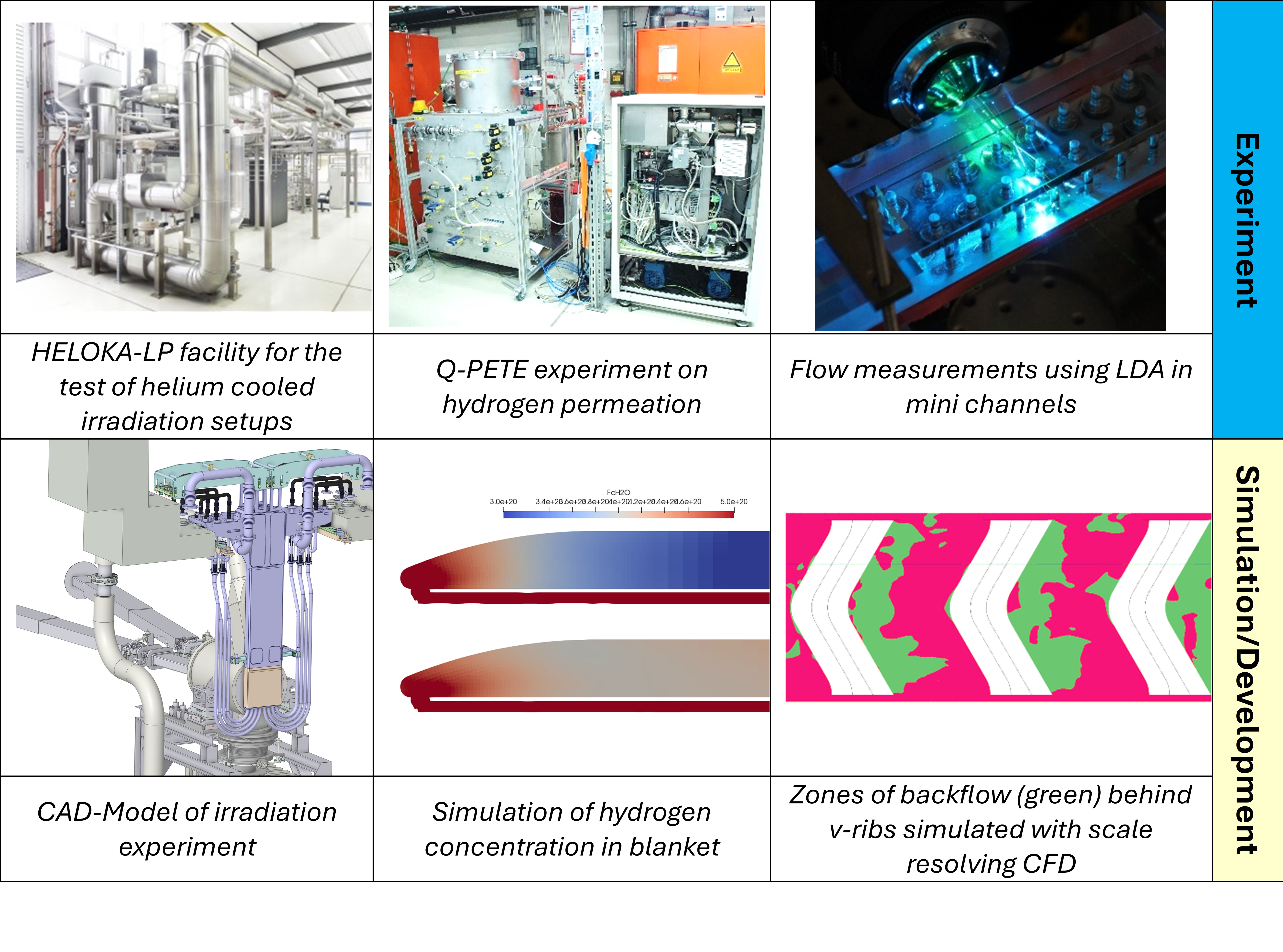
Completed activities include:
- Ignition behavior of lithium under different atmospheres.
- Pure gas analysis, gas purification and separation processes, and impurity source term determination for helium gas loops (more information).
- Investigation of flow phenomena in the HCPB test blanket module: distribution (manifolds) of the cooling gas flow among parallel subcomponents (GRICAMAN experiment), determination of local heat transfer in the cooling channels of the plasma-heated blanket wall (HETRA experiment).
- Irradiation of heaters and material capsules in the BR2 and MARIA material test reactors.
- Fundamental investigations into the thermohydraulics of gas-cooled reactors (THINS, GoFastR, L-STAR).
- Investigation of safety aspects for magnetic coils and power supplies of fusion reactors, arc experiments (MAGS, LONGARC, VACARC) (more information). Development of the MAGS program system.


